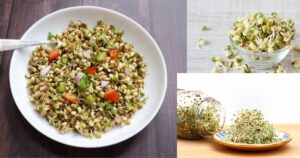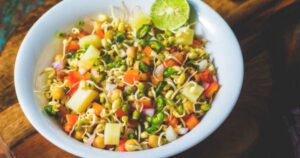Lose Fat Easily: How Whole Grains Can Transform Your Weight Loss Journey

Trying to lose fat can feel overwhelming, especially with so many conflicting diet plans, fad trends, and nutrition advice floating around. Many Americans struggle to find a method that actually works without leaving them hungry or low on energy. But what if the solution was simpler than you think? Including whole grains in your daily diet can help you lose fat easily, support sustained energy, and even improve your overall health. In this article, we’ll explore why whole grains are a key player in fat loss, provide actionable tips to include them in every meal, and clarify common confusions about carbs and weight management. Whether you’re looking to shed a few pounds or kickstart a healthier lifestyle, this guide offers practical advice backed by science and trusted sources like CDC, Mayo Clinic, and WebMD.
Understanding Whole Grains and Their Role in Fat Loss
Whole grains are grains that contain all three essential parts: the bran, germ, and endosperm. Unlike refined grains, they retain fiber, vitamins, and minerals, making them highly nutritious. Many people mistakenly believe that carbs make you gain weight, but studies show that whole grains can actually help you lose fat easily when included in a balanced diet.
- Whole grains contain fiber, which helps you feel full longer.
- They stabilize blood sugar levels, reducing cravings and overeating.
- Rich in vitamins and minerals, they support metabolism and energy levels.
- Trusted sources like Harvard Health highlight whole grains as essential for sustainable weight management.
Common Whole Grains for Fat Loss
Not all grains are created equal. Choosing the right ones is key for fat loss:
- Oats: Perfect for breakfast, packed with soluble fiber that promotes satiety.
- Quinoa: High in protein and fiber, supports muscle maintenance while losing fat.
- Brown Rice: Slow-digesting carb that keeps energy steady.
- Barley: Helps regulate blood sugar and supports digestion.
- Whole Wheat: Ideal for bread, pasta, and wraps.
How Whole Grains Help You Lose Fat Easily
The benefits of whole grains extend beyond basic nutrition. Here’s why they are a fat-loss friendly food:
- Increases satiety: Fiber-rich grains make you feel full, reducing overall calorie intake.
- Boosts metabolism: Whole grains require more energy to digest compared to refined grains.
- Supports gut health: Fiber feeds healthy gut bacteria, aiding digestion and weight management (WebMD).
- Stabilizes blood sugar: Avoids spikes that trigger hunger and cravings.
Practical Tips to Include Whole Grains in Your Daily Diet
Adding grains doesn’t mean overhauling your diet. Here are simple ways to integrate them:
- Breakfast: Oatmeal with fruit, quinoa porridge, or whole-grain toast.
- Lunch: Brown rice with lean protein and vegetables, whole-grain wraps with turkey or chicken.
- Dinner: Barley or quinoa salads, whole-grain pasta dishes with lots of veggies.
- Snacks: Air-popped popcorn, whole-grain crackers, or rice cakes with nut butter.
Combining Grains With Other Fat-Loss Foods
Whole grains are most effective when paired with other nutrient-dense foods:
- Lean proteins: Chicken, fish, tofu, eggs.
- Healthy fats: Avocado, nuts, seeds, olive oil.
- Vegetables and fruits: Fiber-rich, low-calorie additions for fullness and nutrients.
Meal Planning Example
Here’s a simple day plan for fat loss using whole grains:
- Breakfast: Oats with almond milk, chia seeds, and berries.
- Snack: Whole-grain crackers with hummus.
- Lunch: Brown rice bowl with grilled chicken, spinach, and bell peppers.
- Snack: Air-popped popcorn or a handful of almonds.
- Dinner: Quinoa salad with roasted vegetables and salmon.
Addressing Common Confusions About Grains and Fat Loss
Many people think cutting carbs is necessary for losing fat. However, refined carbs (white bread, sugary cereals) are the issue, not whole grains. Incorporating whole grains can:
- Prevent nutrient deficiencies by providing essential vitamins and minerals.
- Reduce unhealthy cravings compared to low-carb fad diets.
- Support long-term sustainable fat loss.
Scientific Evidence
Research shows that diets rich in whole grains reduce abdominal fat and improve heart health (Mayo Clinic). The fiber content slows digestion, keeping blood sugar steady and energy stable.
Practical Strategies for Maintaining a Grain-Inclusive Fat-Loss Diet
- Keep healthy grains stocked in your pantry.
- Plan meals in advance to include at least one grain per meal.
- Mix grains with vegetables, proteins, and healthy fats.
- Track your meals if needed to ensure calorie balance.
Tips for Success
- Start small: Add one serving of whole grains per day.
- Experiment: Try different grains to keep meals interesting.
- Balance: Don’t overeat grains—combine them with proteins and veggies.
- Consistency: Make whole grains a routine part of your lifestyle.
Frequently Asked Questions (FAQ)
Can I lose fat easily by only eating whole grains?
Answer: Whole grains help with fat loss but should be part of a balanced diet including lean proteins, vegetables, and healthy fats. They make you feel full, stabilize blood sugar, and support metabolism.
Which grains are best for weight loss?
Answer: Oats, quinoa, brown rice, barley, and whole wheat are excellent for fat loss due to their high fiber and nutrient content.
Do whole grains prevent weight gain?
Answer: Including whole grains instead of refined grains can help prevent weight gain by improving satiety, reducing cravings, and supporting healthy digestion.
How much whole grain should I eat daily?
Answer: Most adults should aim for 3–6 servings of whole grains per day, depending on calorie needs. Examples: ½ cup cooked oats, 1 slice whole-grain bread, or ½ cup cooked brown rice.
Are carbs bad for losing fat?
Answer: Not all carbs are bad. Whole grains provide complex carbs, fiber, and nutrients that actually help you lose fat easily when part of a balanced diet.
Conclusion
Incorporating whole grains into your daily meals is a simple, effective, and sustainable way to lose fat easily. By understanding the benefits of fiber, choosing the right grains, combining them with other healthy foods, and maintaining consistency, you can improve energy levels, support digestion, and reach your fat-loss goals.
- Whole grains improve satiety and reduce overeating.
- They stabilize blood sugar and support metabolism.
- Pairing grains with proteins, vegetables, and healthy fats enhances fat loss.
- Consistency and meal planning are key for sustainable results.
- Replacing refined carbs with whole grains prevents unhealthy weight gain.
Disclaimer
This article is for informational purposes only and is not a substitute for professional medical advice. Consult your doctor or a registered dietitian before making any significant changes to your diet, especially if you have underlying health conditions.
